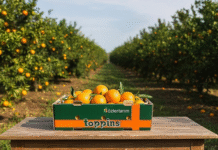
According to the World Health Organization (WHO), approximately 60 crore people (that is, almost 1 in 12 people) worldwide fall sick after consuming contaminated food and approximately 4 lakh people die every year. In India, the majority of food-borne disease outbreaks often go unrecognized or un-investigated. In many cases, they receive significant attention only after major health or economic damage. Moreover, controlling outbreaks, detection and removal of affected food, identification of the factors that contributed to food contamination, prevention of future outbreaks and strengthening of food safety policies are not possible without having proper traceability measures in place. From tracking supplies to monitoring safety issues like food contamination and recalls – track and trace capabilities are critical in the food and beverage industry supply chain. In the absence of a good track and trace system, it is almost impossible to competently or legally operate a food or beverage business.
The supply chain is lengthening
Globalization has triggered consumer demand for a variety of foods, resulting in an increasingly complex and longer global food chain. The increasing demand for food creates both opportunities and challenges for food safety. Tracking systems installed on the product packs ensure integrity as well as food quality, and are becoming extremely popular. According to the recent Acumen Research and Consulting report, the global track and trace solutions market is estimated to grow at a CAGR over 18.0% from 2019 to 2026 and is projected to reach US$ 7.2 billion (approximately 50,000) by 2026.
Barcode and RFID tracking
At present, food and beverage track and trace deliveries use two methods – barcoding by inkjet, laser or thermal printing and Radio-Frequency Identification Technology (RFID) tagging. An RFID label or tag is a smart label which replaces traditional paperwork and is used for tracing and tracking the origin, location and the product’s journey throughout its life cycle from production to storage, transport and delivery. RFID labels are readable from a distance and often considered an ideal solution since their chip can receive and store data at any given point. As far as barcode tracking, while consumers think that the barcode is a way to add speed and accuracy in payment at the grocery store, it is actually also used to help track various goods, enhance consumer safety and ensure product quality. In the case of a recall, barcodes provide immediate tracking.
Mandatory implementation of track and trace solutions
Reports suggest that the food industry has experienced several losses in the past owing to the sale of counterfeit goods. Contaminated and adulterated food products have detrimental effects on consumer health. According to the WHO report, contamination of infant formula with melamine in China in 2008 affected 300,000 infants and young children; the Enterohaemorrhagic Escherichia coli¹ outbreak in Germany in 2011 linked to contaminated fenugreek sprouts (cases were reported in eight countries in Europe and North America) led to 53 deaths and significant economic losses.
Considering such scenarios, the implementation of adequate track and trace solutions were mandated across several countries to ensure public health and safety. Moreover, the introduction of the Food Safety Modernization Act (FSMA) has driven the adoption of these solutions into supply chain logistics.
Tracking identifies issues before it’s too late
At present many large companies are active as track and trace solution providers. In October 2018, US-headquartered rfxcel, a track and trace solution provider for the pharmaceutical market, announced the extension of its solutions for the food and beverage industry. Closer at hand, India-based HCL Technologies’ Cloud-based track and trace solution offers complete visibility of the food supply chain. The solution is capable of inspecting problems and ensuring compliance of food safety regulations. Tive, a US-based in-transit supply chain tracking solutions provider, has recently received the ‘2019 Food Logistics Champions – Rock Stars of the Supply Chain’ award. Tive works with food companies to ensure safety of their perishable products by avoiding harmful temperatures, humidity and costly shipping delays. Interamerican Coffee uses Tive’s multi-sensor trackers for complete visibility of the humidity of its high-quality coffee shipments. Such traceability data helps companies to identify and fix the issue before it’s too late.
Traceability boosts competitive growth
The food industry is fast-paced and competitive; it faces many challenges that other industries do not, such as numerous government regulations to comply with and the high possibility of overstocking products that might expire soon. Apart from food safety and accountability benefits, supply chain traceability allows food and beverage companies to secure their position in the competitive industry.
Glossary
¹Escherichia coli strain, which causes a severe intestinal infection in humans, is known as enterohemorrhagic E. coli (EHEC). This is different from other E. coli because it produces a potent toxin called Shiga toxin, which damages the lining of the intestinal wall and causes bloody diarrhoea.
IndiFoodBev — authentic, impactful and influential
An English-language food and beverage processing and packaging industry B2B platform in print and web, IndiFoodBev is in its third year of publication. It is said that the Indian food and beverage industries represent approximately US$ 900 billion in revenues which implies more than 20% of the country’s GDP. Eliminating the wastage on the farmside can help to deliver more protein to a higher number of the population apart from generating sizable exports. The savings in soil, seeds, water, fertilizer, energy and ultimately food and nutrition could be the most immense contribution that country is poised to make to the moderation of climate change.
To improve your marketing and grow sales to the food and beverage processing and packaging industry, talk to us. Our research and consulting company IppStar [www.ippstar.org] can assess your potential and addressable markets in light of the competition. We can discuss marketing, communication, and sales strategies for market entry and growth.
Suppliers and service providers with a strategy and budget for targeted marketing can discuss using our hybrid print, web, video, and social media channels to create brand recognition linked to market relevance. Our technical writers are ready to meet you and your customers for content.
The second largest producer of fruit and vegetables in the world is continuously expanding processing capacities and delivery systems with appropriate innovative technologies. We cover product and consumer trends, nutrition, processing, research, equipment and packaging from farm to thali. Get our 2025 media kit and recalibrate your role in this dynamic market. Enhance your visibility and relevance to existing markets and turn potential customers into conversations. Ask for a sample copy of our bi-monthly in print or our weekly IndiFoodBev eZine each Wednesday.
For editorial info@ippgroup.in — for advertisement ads1@ippgroup.in and for subscriptions subscription@ippgroup.in
Naresh Khanna – 10 February 2025
Subscribe Now











